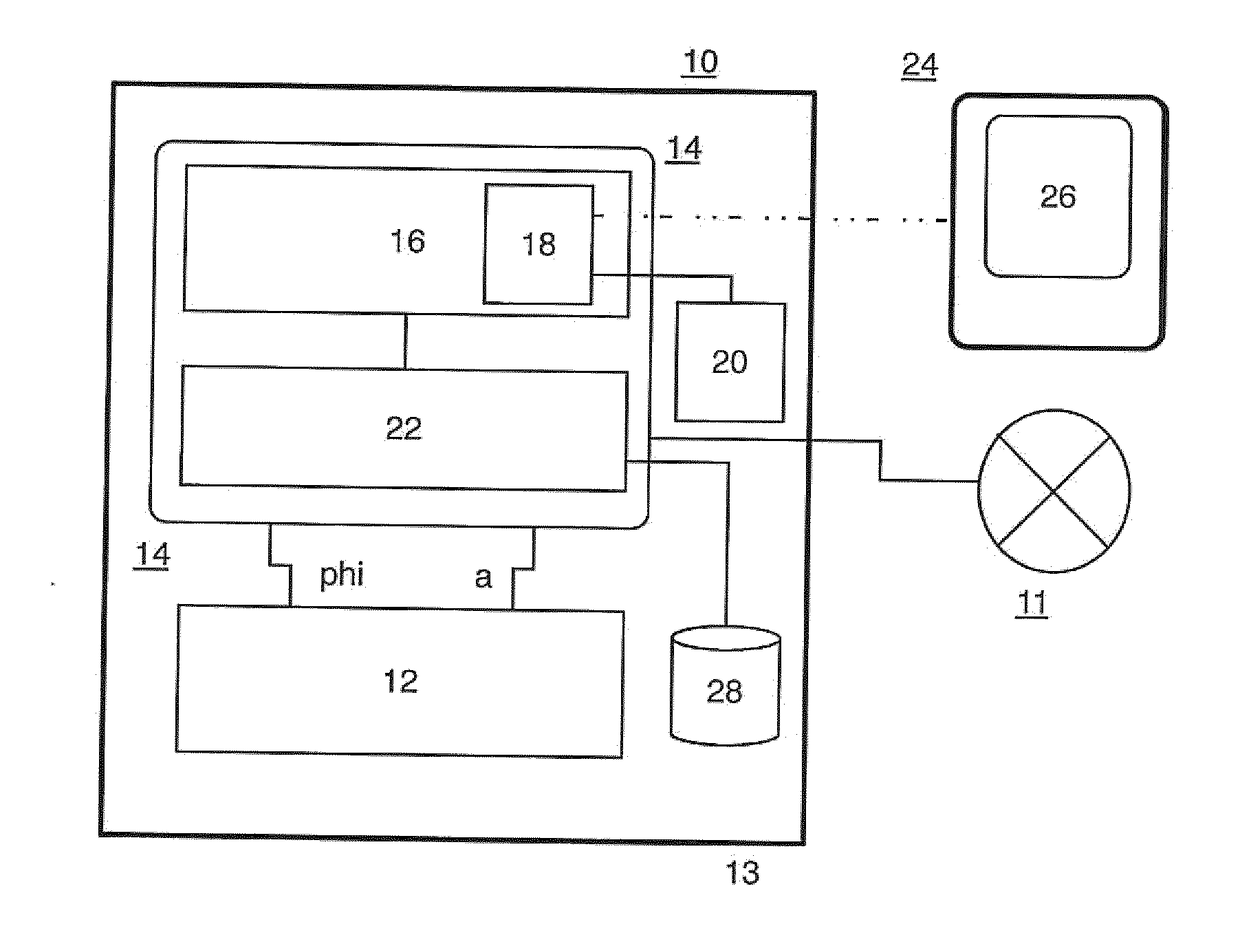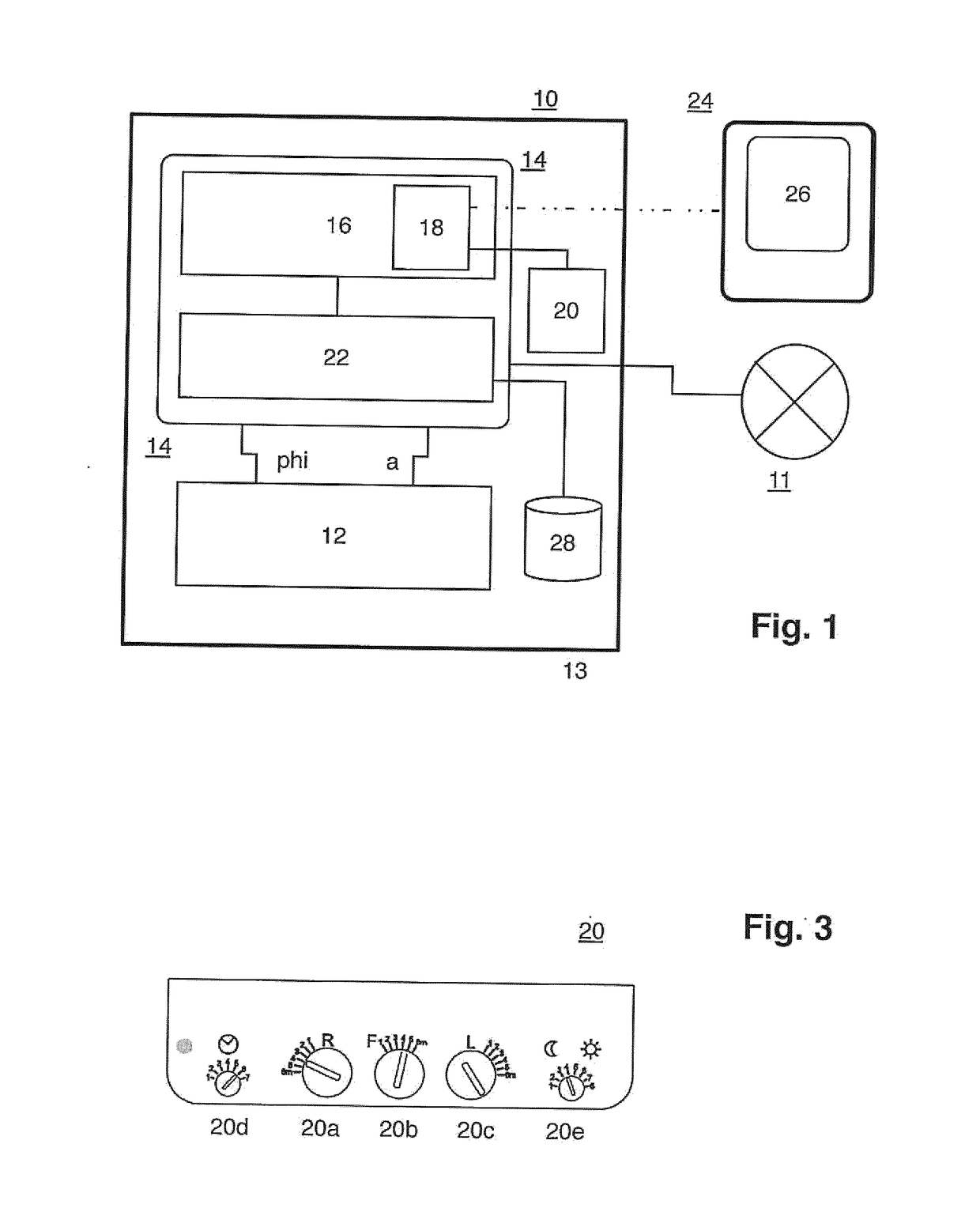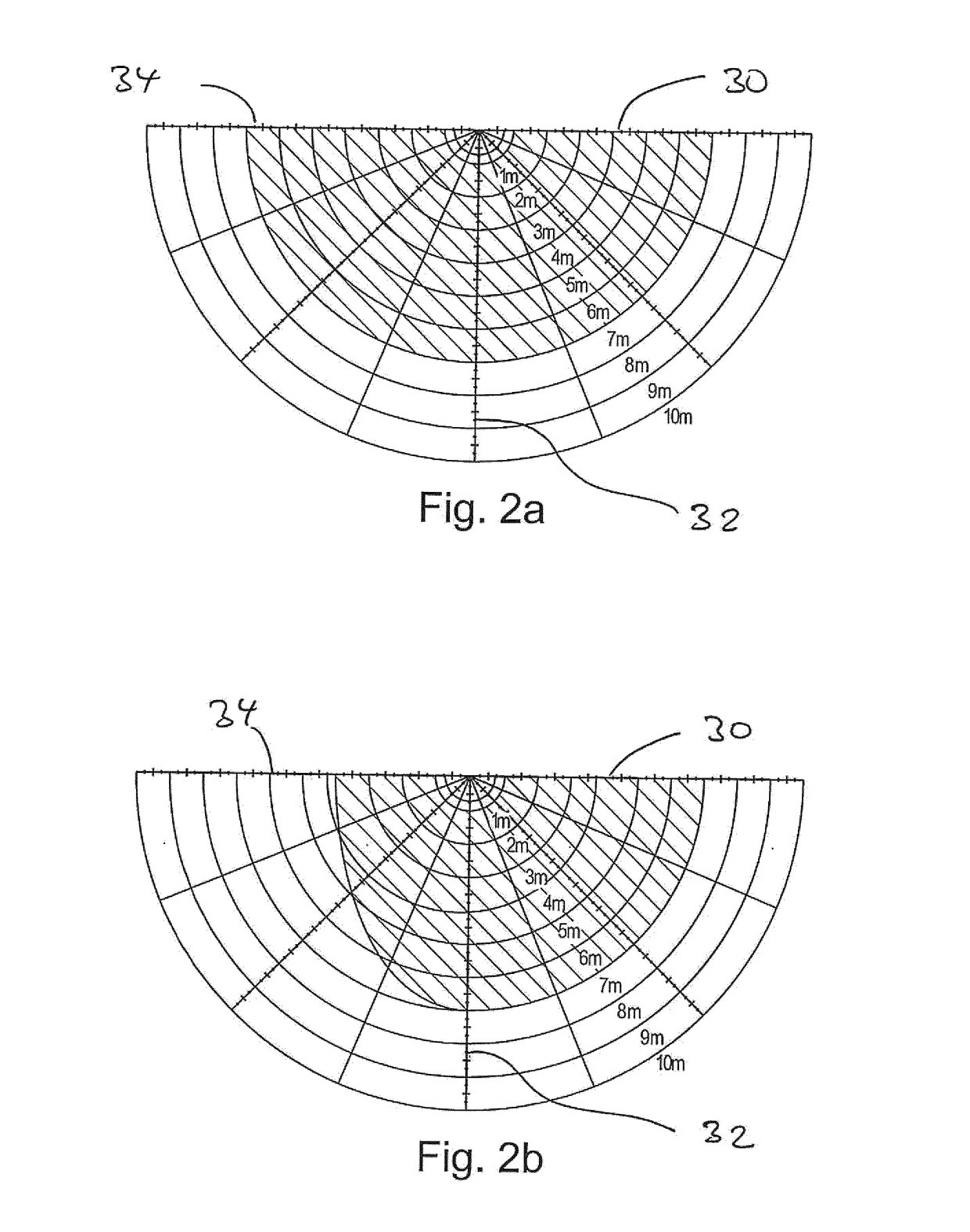Motion sensor device and use thereof
- Summary
- Abstract
- Description
- Claims
- Application Information
AI Technical Summary
Benefits of technology
Problems solved by technology
Method used
Image
Examples
Embodiment Construction
[0023]FIG. 1 shows a first preferred exemplary embodiment of a motion sensor device according to the present invention in the form of a schematic block diagram. Detector means 12 are provided in a housing, which is indicated with the border line 10 and suitably mounted on a wall, a ceiling or the like, and realized in the form of a high-frequency motion sensor device; detector means of this type in the form of high-frequency motion sensors are disclosed in DE 10 2012 103 177 A1 by the applicant, which with respect to the constructive realization of such a motion sensor device including the realization of the functional components according to FIG. 1 of this publication, the high-frequency hardware according to FIG. 2 of this publication and the signal processing functionality according to FIGS. 3, 4 of this publication, as well as the corresponding portions of the description, is incorporated into the disclosure of the present application by reference. Detector means designed in thi...
PUM
 Login to View More
Login to View More Abstract
Description
Claims
Application Information
 Login to View More
Login to View More - R&D
- Intellectual Property
- Life Sciences
- Materials
- Tech Scout
- Unparalleled Data Quality
- Higher Quality Content
- 60% Fewer Hallucinations
Browse by: Latest US Patents, China's latest patents, Technical Efficacy Thesaurus, Application Domain, Technology Topic, Popular Technical Reports.
© 2025 PatSnap. All rights reserved.Legal|Privacy policy|Modern Slavery Act Transparency Statement|Sitemap|About US| Contact US: help@patsnap.com



